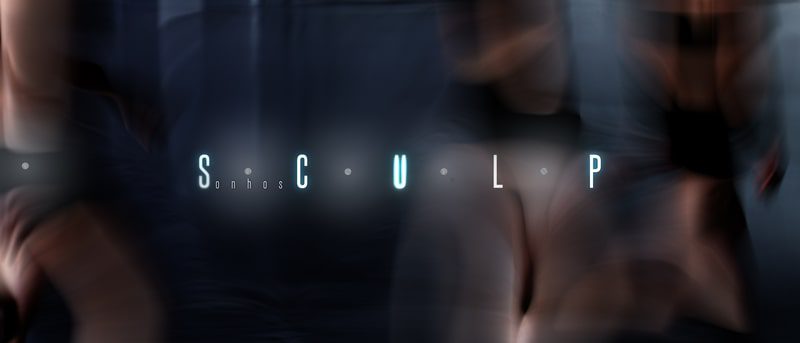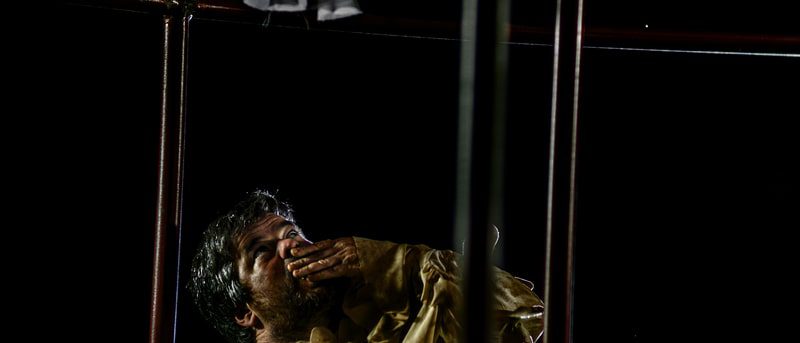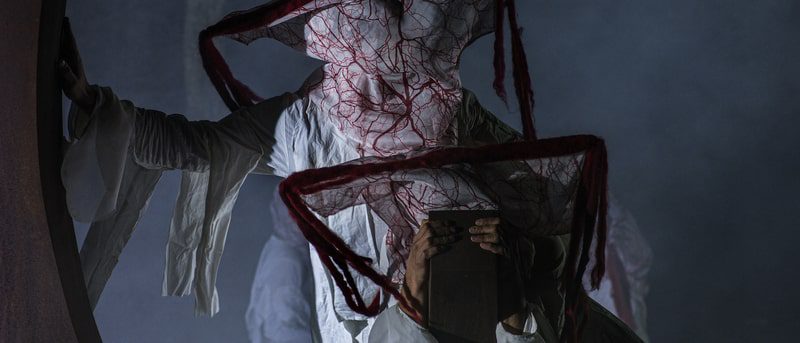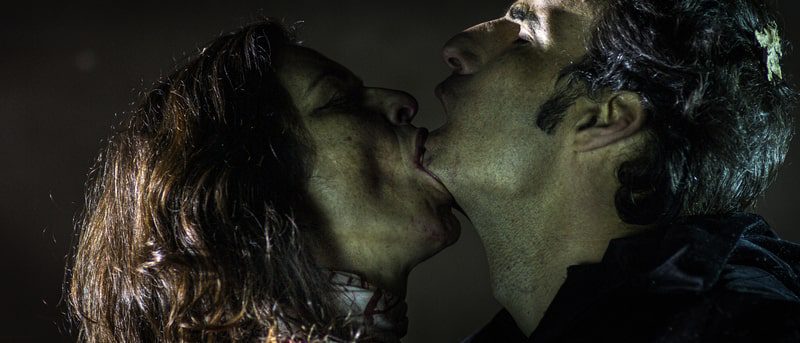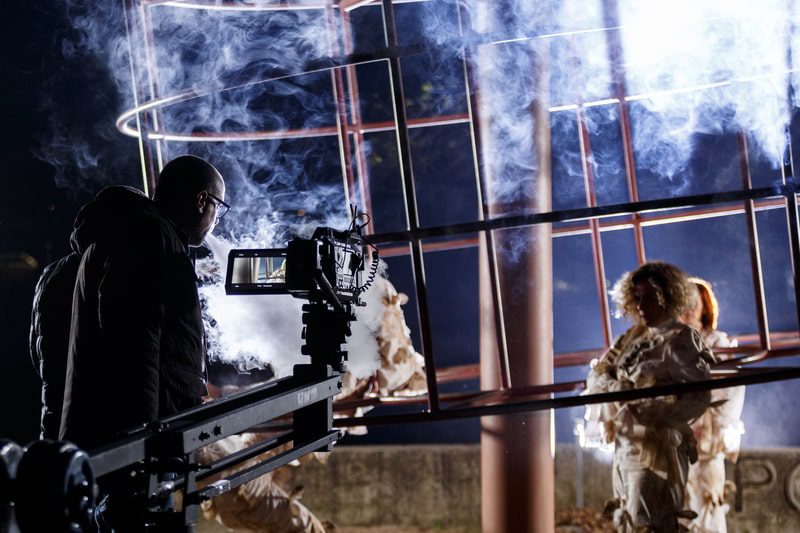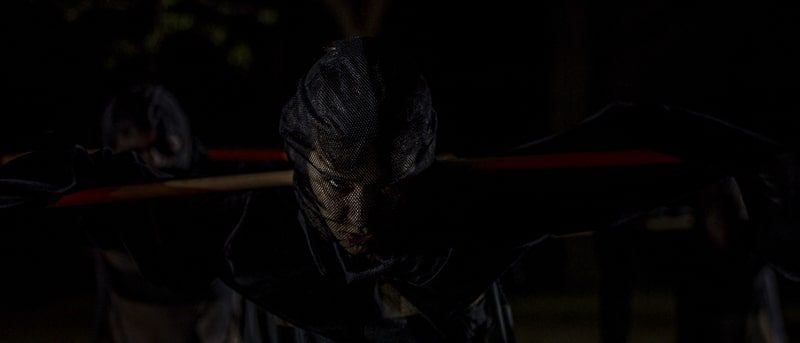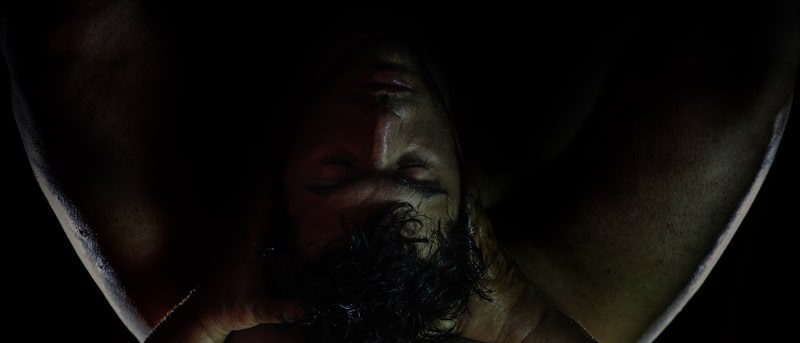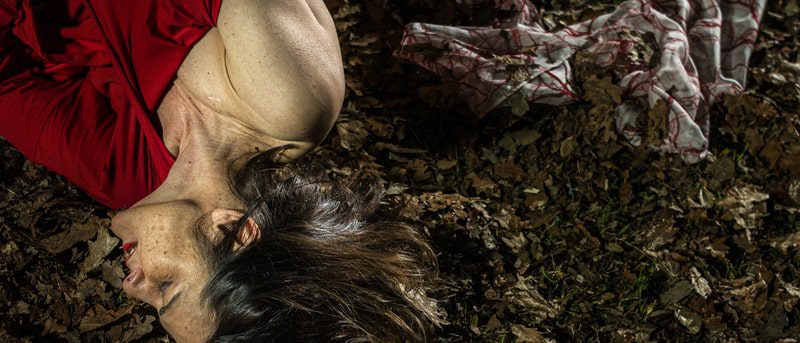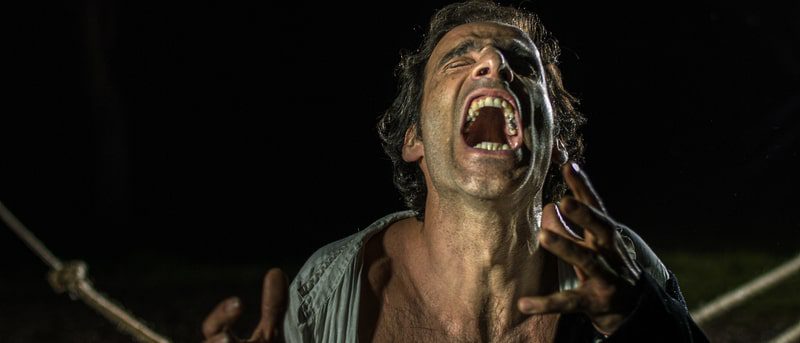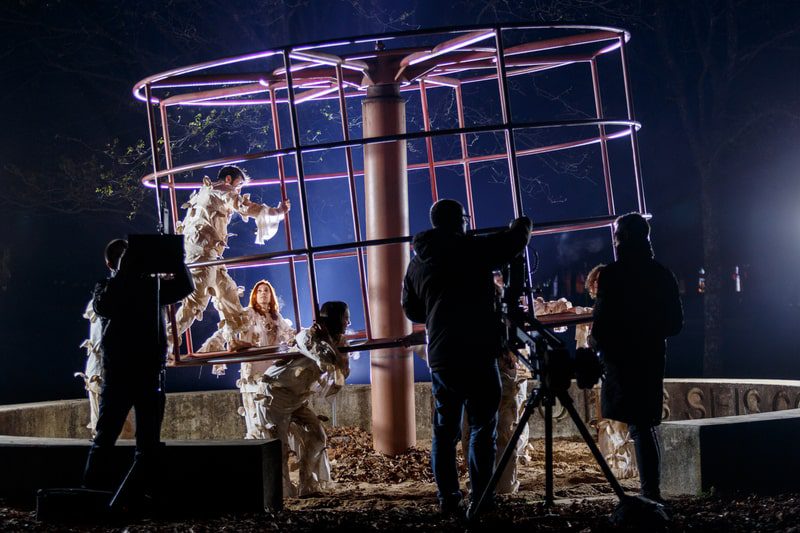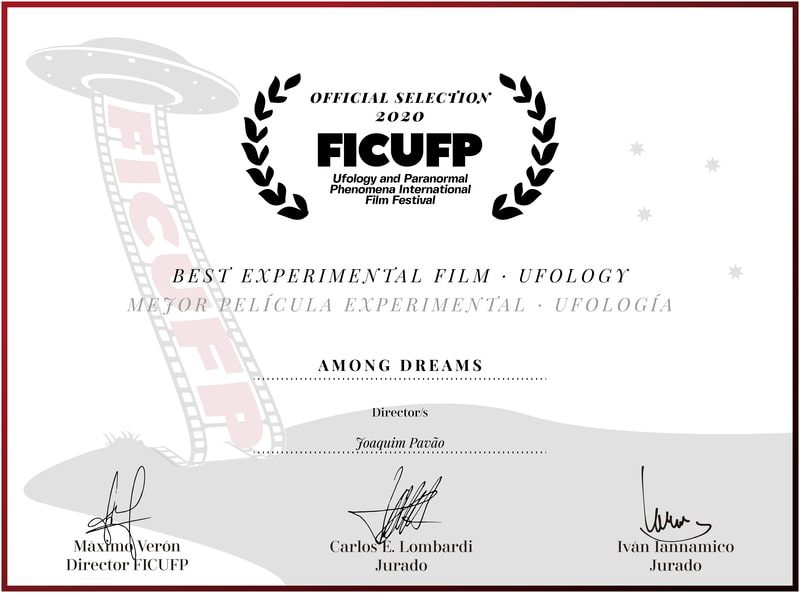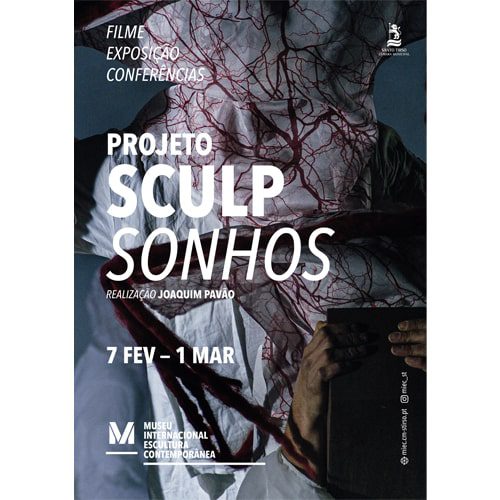Exclusive Interview with Joaquim Pavão (Madrid Film Festival)
SCULP Sonhos Project
07/Feb/2020
a 01/Mar/2020
SCULP is a film work by Joaquim Pavão created around the sculptures in the collection of the International Museum of Contemporary Sculpture (MIEC).
In SCULP, a dystopian narrative is constructed in which, in a context of human survival struggle on planet Earth, the free will of most human beings is replaced by the “correct will” established by a small group and communicated to each individual through a voice generated by an algorithmic system.
One project, two artistic objects: SCULP_SONHOS | SCULP
Two film works to be experienced in different ways.
SCULP_SONHOS is the result of a commission by the MIEC, aimed at the museum audience; a film work on display that can be viewed in full, interrupted, interpolated, or started at any moment. It functions like a poetry book that opens to any page and is read piece by piece. Each scene has its own life and force, all arranged as interconnected cells in a dystopian universe. There are references to the fictional world it proposes, small dialogues, and monologues that suggest but do not explain. Here, more important than the narrative is the suggestion — the unease intended to provoke the viewer.
SCULP is a feature film to be distributed in national and international cinemas and other distribution channels, aimed at a wide audience. The film tells the story of the inhabitants of a survival system created by humans in a context of catastrophe, where free will is replaced by the universal “correct will.” The entire film’s scenography is composed of works from the MIEC collection and its spaces.
Production
Scheduling
2015-20 | Pre-production of the SCULP project.
2018 | Contracting of the work SCULP_SONHOS with MIEC.
2019 | Filming, editing, and post-production of SCULP_SONHOS. Filming of parts of the feature film SCULP.
7 February 2020 | Premiere of the film SCULP_SONHOS at MIEC.
2020-22 | National and international distribution of SCULP_SONHOS through museums and art festivals. Applications for additional funding to complete the feature film SCULP.
Dates to be confirmed | Completion, release, and distribution of the feature film SCULP.
Team
Joaquim Pavão – Director | Recent awards with the film Antes que a noite venha – falas de Antígona:
MMP’s Film Festival 2018; Vegas Movie Awards August 2019 (Best Indie Short, Best Editing); Falcon International Film Festival London October 2018 (Best Director, Best Short Film); European Cinematography Awards August 2018 (Best Original Score); 21st Avanca International Film Festival (Best World Premiere).
Óscar Flecha – Original Soundtrack | Composer, Professor, and Guitarist; Director of the Santo Tirso International Guitar Festival.
Álvaro Moreira – Curator of the work SCULP_sonhos | Director of the MIEC.
José Oliveira – Director of Photography | Recent awards, with the film “Antes que a noite venha – falas de Antígona”: AIP Best Cinematography (short) 2018; Vegas Movie Awards August 2019 (Best Cinematography); Falcon International Film Festival LONDON October 2018 (Best Cinematography); European Cinematography Awards August 2018 (Best Cinematography); Red Carpet Film Awards, NY (Best Cinematography).
Isabel Fernandes Pinto – Screenplay and Performance | Recent awards, with the film “Antes que a noite venha – falas de Antígona”: Vegas Movie Awards August 2019 (Best Actress); European Cinematography Awards August 2018 (Best Actress); Red Carpet Film Awards NY (Best Actress).
Tucha Martins – Costume Design | Recent awards, with the film “Antes que a noite venha – falas de Antígona”: Vegas Movie Awards August 2019 (Best Costume Design).
Gil Moreira – storyboard e desenho concetual | arquiteto.
Tiago Vouga – Production Director | Producer and Stage Manager.
António Costa Valente – Executive Producer | Director of the Avanca International Film Festival.
The full team includes more than 120 people, among them actors (Catarina Gomes, Teresa Chaves, Rui Oliveira, Joel Sines, Rui Pena, Carlos Fragateiro, Maria Mata, Maria Avelãs), extras, technicians, assistants, and students from the sewing classes of MODATEX.
Creative Process
Premises for a film work with seven sculptures / seven musical pieces
Motto:
“Whoever stops loving the original form to love its simulacrum, or image, hates himself.”
(Iehudah Abrabanel, Dialogs of Love)
Glosses:
To be born, To eat, To play, To build, To contemplate, To procreate, To die.
The sculpture is body, the body is sculpture. The verb is not movement, the verb is action.
The world created through action is another synthesis.
Elements in amalgam form another synthesis: the original form.
For the film-exhibition SCULP_SONHOS
Perhaps sculpture is defined by the dialogues it establishes with its surroundings. Therefore, it is necessary to first question: what is the city, and along with the city, what are the hills, the “terrains vagues,” scattered construction, the territory? Is this entire pre-existing amalgam also a sculptural ensemble? Are buildings statues? Are streets installations? Are landscapes pictorial compositions? Are people dressed in a certain way, moving in a certain way, using certain objects, aesthetic creations of themselves? If so, sculptures are just another human creation in the city; we will see them in an improvised background, a theatrical play without protagonists.
If not, we grant sculpture the prominence of a work of art, where the square, the garden, or the street support it and the entire surrounding environment becomes its stage, making it a unique piece amid collective anonymity. It makes one want to stop time. To look at the built environment in backlight, which turns it into a silhouette and dissolves the idiosyncrasies of windows and details. To observe the morphology of creative gesture against chaos. The sculpture fills the city’s stage with its monologue.
It is then that people appear, the listeners. The piece interrupts the daily path, disturbs the step, raises questions, is impertinent, forces a detour.
Occupying space presupposes changes in time and, for this evidence not to be just a play on words, one must stop. Have the courage to interrupt the journey, make a detour, delay arrival. Give the piece that monologues the listening that will free it from itself. Sculpture, like all beings, is born to cease being what it is. Therefore, stopping is no longer just a desire—it is an urgency. The work that is not challenged remains crying alone in the middle of the city. Only bodies save it, in counterpoint movements with five attentive senses, in that untranslatable dialogue we call enjoyment.
Then sculpture becomes landscape because it is the setting of an encounter. It becomes building and street because it integrates into the city’s skeleton. It becomes people because it dialogues. And it is in this dwelling that the piece exists, in the time it has left until deterioration and oblivion, alive because imminently dead, strong because perishable; after all, it is a passing being like us.
Synopsis for the SCULP film project
Somewhere in the future, the human species is on the brink of extinction due to the development of multi-resistant bacteria, climate change, and armed conflicts between nations. As a survival resource, technology becomes endemic to human life and tends to replace free will. All delimitation, control, and possession of territory is forbidden. The idea of nation is abolished in favor of a totalitarian and universal State.
In this State, a System managed through algorithms determines the function, choices, and actions of each individual, controlling their entire social existence with the goal of prolonging human life, ensuring reproduction, and maintaining dominance over planet Earth.
Although thoughts and emotions are also induced and manipulated by the Algorithmic System, knowledge of the mind and technological evolution still do not allow absolute control over this dimension of the individual. It is here that a spark of freedom still resides.
To control this potential unpredictability, the System keeps tight surveillance over all individuals, classifying those who question algorithmic guidelines as Unstable. These are subjected to close monitoring and various mental manipulation procedures. After treatment, if doubts persist, they are invited to peacefully disconnect from the System.
To prevent any union among individuals that could lead to future rebellions, a process is underway to abolish emotional and sexual relationships. All new human embryos will be obtained in laboratories and gestation will occur entirely outside the womb, in incubators.
Bel is a woman hidden inside the display case where she lives. A mid-level employee, she works in the department that screens the Unstable for exit. Appearance does not matter to her, but it is through appearance that she draws the balance allowing her to continue living. She seems fine on the surface.
In the past, she endured various forms of violence and never sublimated that suffering nor turned it into creative strength. A pain, a discomfort, a voice lodged inside her that she tries to silence.
The System was initially a safe harbor for her. She helped build it as a laborer who does not want to know the entire design. She is not interested in its architecture because, deep down, she fears its fragility. She prefers not to think the “ceiling” might collapse, lying to herself.
Because the System does not yet fully control the emotional complexity of individuals, it has not been possible to completely anesthetize their emotions and capacity for empathy. It is largely from this capacity that her past sufferings arise.
Thus, albeit discreetly, she lives in permanent psychological contradiction in the role she performs. This was also one of the reasons for placing her there: by exercising indifference toward others so often, she might acquire it herself. However, during surveillance, several contradictions, doubts, and inconsistencies were detected. The attempt to manipulate Bel had failed.
It is in this context of deep unhappiness and loneliness that Bel meets Spes. He approaches her at a moment when she is alone to inform her that he will be her new colleague and to settle some work details.
Without fully understanding why, the System experiences a total shutdown and its connections to the CEO (Control and Order) are temporarily inactive. Both perceive this freedom, which awakens in them the human capacity for empathy and sexual impulses. This experience triggers emotions that will unleash different feelings within them.
When the System is restored and both are again controlled by the CEO, Spes takes the sleeping Bel to his dwelling.
Following this experience, Bel’s unconscious begins to reveal itself more strongly and incisively. Every night, she has violent and strange dreams involving the release of imprisoned impulses. Consciously, she does not want to accept this turmoil within her and tries to maintain her normal daily routine, telling herself that these dreams are fleeting and trying to believe that her relationship with Spes was also a dream. However, she is pregnant and prepares to have an abortion. All these contradictions lead her into a kind of madness where she can no longer distinguish truth from lies. Only the dreams are real, as representations of her unconscious truth.
Bel is unable to make a decision for her life. Once again, she allows herself to be guided by the System. Thyr, her superior, convinces her to disconnect. When Bel leaves, it is the first time she looks at herself and feels the need to be honest with herself.
Spes is an employee of the System tasked with monitoring and testing workers flagged for showing doubts about the current paradigm.
He was raised and educated by a wise man who provided him security and knowledge. He possesses a deep understanding of human psychology and behavior, validated by experience. Unlike Bel, Spes carries out his duties always considering the global architecture of the System, to which he wants to contribute.
Spes’s work process involves approaching the monitored individual and confronting them with their doubts through conversation. Usually, through emotional manipulation involving guilt, isolation, and psychological weakening, the individual ends up desiring release and peacefully requesting to exit the System.
With Bel, the process was meant to be routine, but the momentary System shutdown and their relationship caused him deep emotional turmoil. He discovers a human capacity neglected by the System that may be the key to the survival of the species: empathy.
To be with her, Spes pretends to be Unstable, but during the interview, the communication between them is completely clouded by uncontrolled emotion.
Spes then decides to confront his superior, Thyr, questioning who truly controls the Algorithmic System, and if no one does and it is entirely technological, what are we becoming? Thyr, advocating and defending the current paradigm — which allowed the abolition of wars and survival against epidemics — denies the importance of these questions and rejects any alternative path. Spes leaves the office convinced that the human species cannot survive without reclaiming its capacity for empathy. He is determined to find Bel again and start a process of change from within the System itself.
*Text written under the terms of the 1990 Orthographic Agreement.
Media
A Arte de Ser Textura em Filme (TKNT)
Filme “Entre Sonhos” de Joaquim Pavão estreia na RTP (Glam Magazine)
Depois da Argentina, Filme “Entre Sonhos” premiado em Itália (3rd Assurd Film Festival)
Dreams (ENE)
Images
